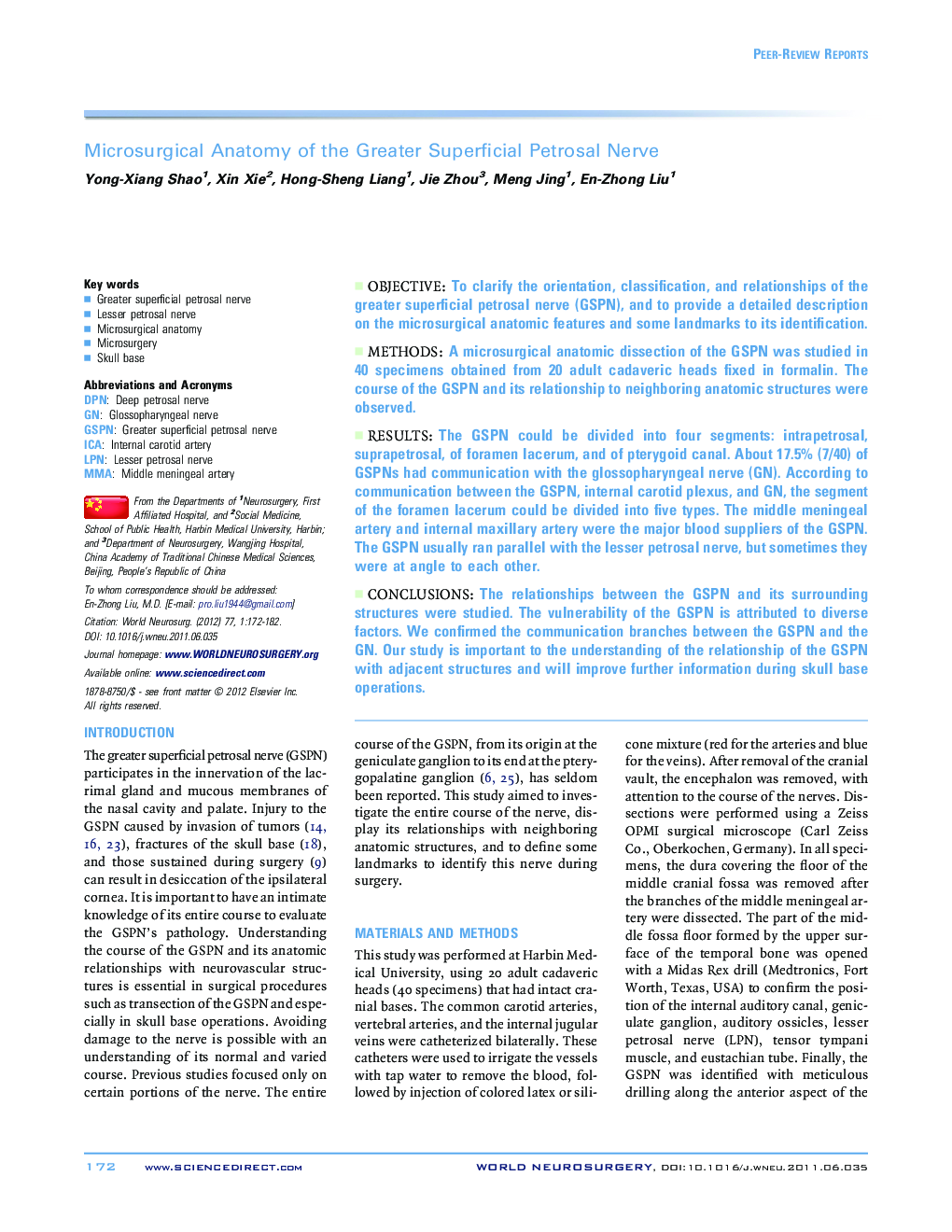| Article ID | Journal | Published Year | Pages | File Type |
|---|---|---|---|---|
| 3096648 | World Neurosurgery | 2012 | 11 Pages |
ObjectiveTo clarify the orientation, classification, and relationships of the greater superficial petrosal nerve (GSPN), and to provide a detailed description on the microsurgical anatomic features and some landmarks to its identification.MethodsA microsurgical anatomic dissection of the GSPN was studied in 40 specimens obtained from 20 adult cadaveric heads fixed in formalin. The course of the GSPN and its relationship to neighboring anatomic structures were observed.ResultsThe GSPN could be divided into four segments: intrapetrosal, suprapetrosal, of foramen lacerum, and of pterygoid canal. About 17.5% (7/40) of GSPNs had communication with the glossopharyngeal nerve (GN). According to communication between the GSPN, internal carotid plexus, and GN, the segment of the foramen lacerum could be divided into five types. The middle meningeal artery and internal maxillary artery were the major blood suppliers of the GSPN. The GSPN usually ran parallel with the lesser petrosal nerve, but sometimes they were at angle to each other.ConclusionsThe relationships between the GSPN and its surrounding structures were studied. The vulnerability of the GSPN is attributed to diverse factors. We confirmed the communication branches between the GSPN and the GN. Our study is important to the understanding of the relationship of the GSPN with adjacent structures and will improve further information during skull base operations.
